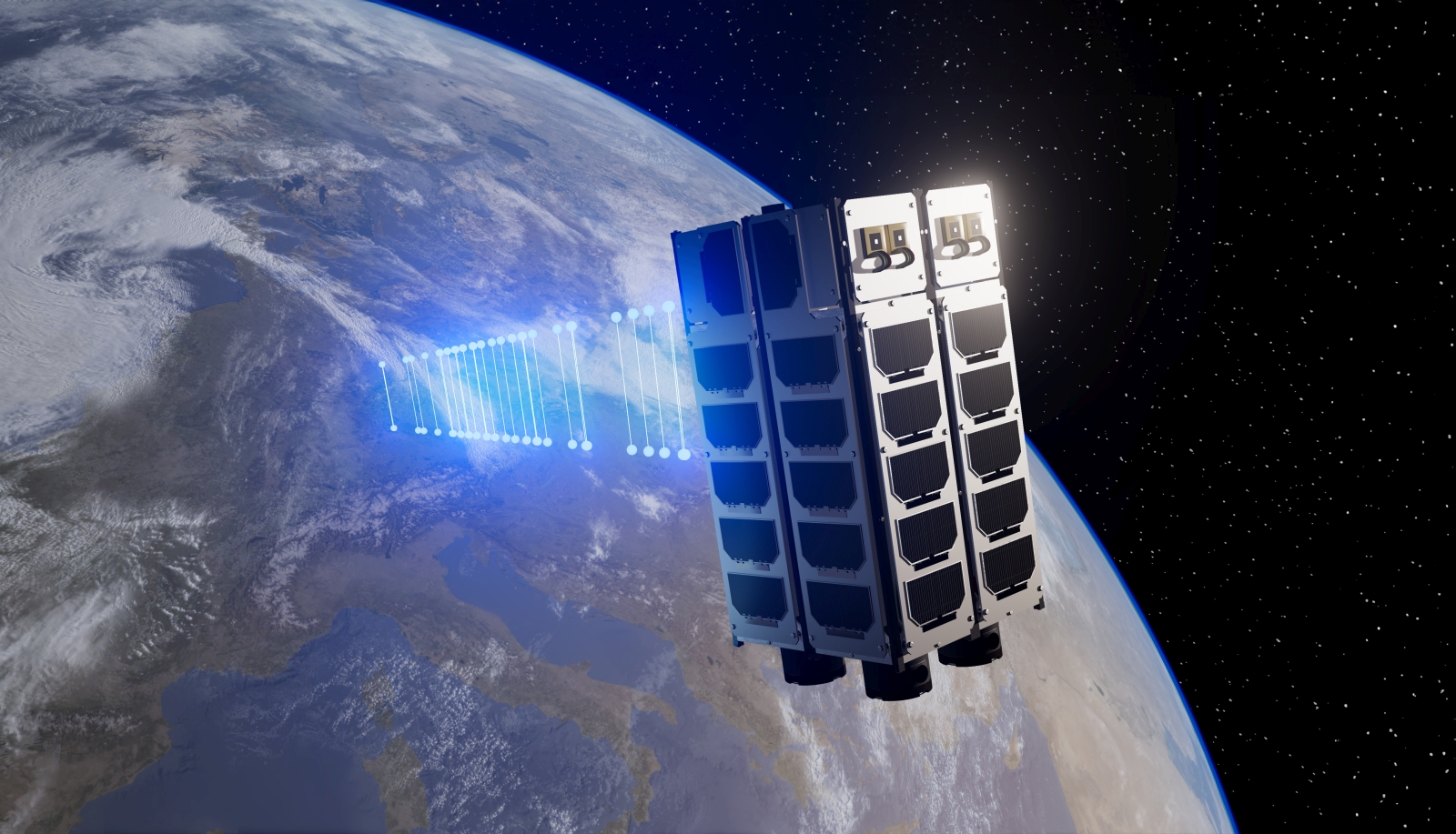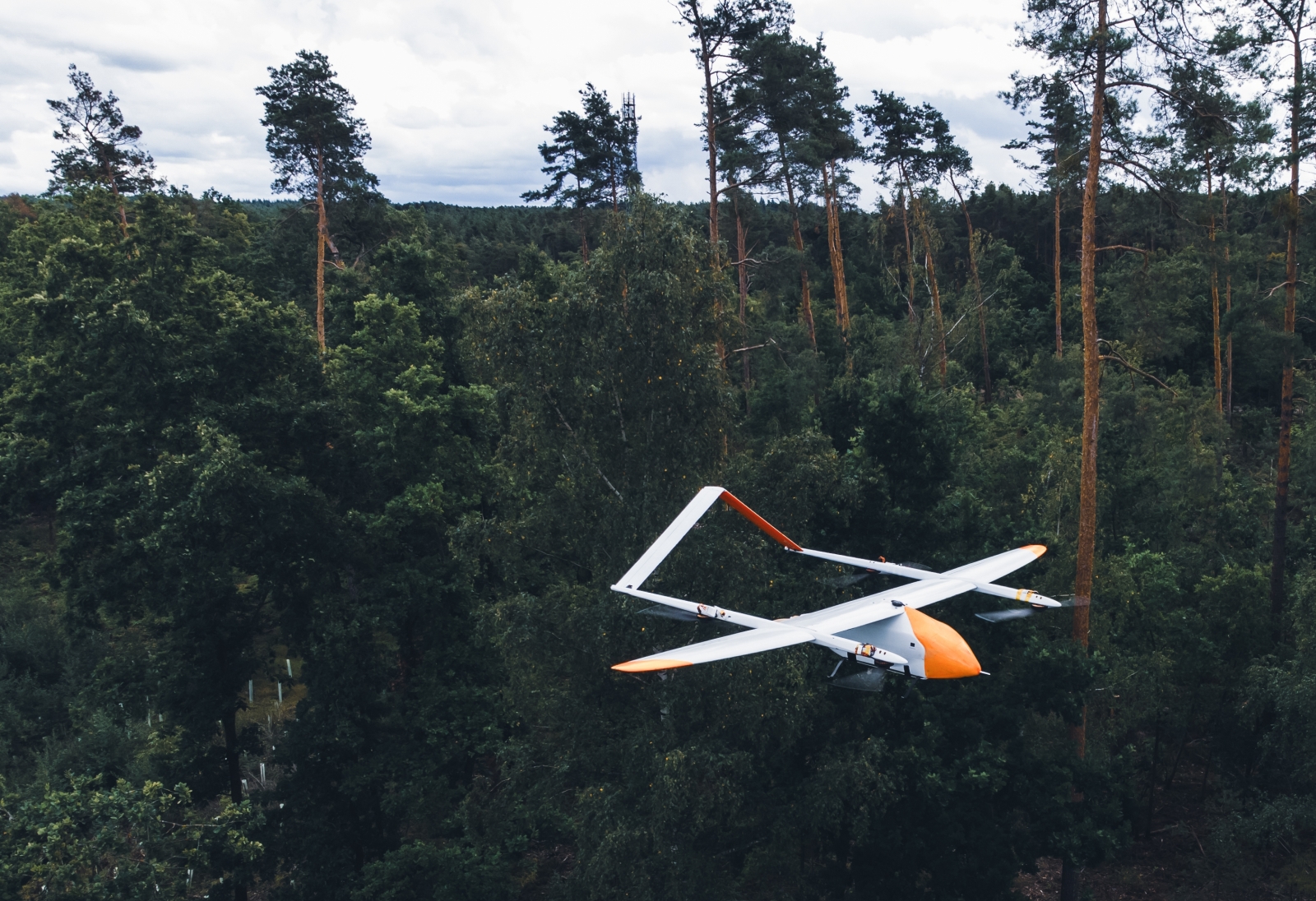The aerospace industry is mapping its way forward to a climate-neutral future. In keeping with this trend, the 2024 ILA Berlin, to be held from June 5 to 9, will focus on subjects like climate action, sustainability, and the digital transformation. The event is supported by the European Commission as a strategic partner. Defense is another topic of growing importance. Across all these subjects, the Fraunhofer-Gesellschaft will be exhibiting and presenting solutions developed in-house. These solutions are helping German and European aerospace industry companies to further their technological sovereignty.
The Fraunhofer institutes will operate two booths (Hall 2, Booth 270, and Hall 4, Booth 240), where they will be showcasing nearly 50 exhibits. For example, Fraunhofer AVIATION & SPACE, an alliance of more than 30 institutes, is to feature key technologies for the future of the aerospace industry. Concepts for sustainable aviation, for example through lightweight construction and engineering, climate-neutral fuels, and electric propulsion, will be a major area of focus. Fraunhofer researchers will also be presenting innovative aviation systems for vertical mobility in urban settings. The space exhibits demonstrate the Fraunhofer-Gesellschaft’s expertise in developing complete satellite systems. The Fraunhofer Segment for Defense and Security VVS will feature solutions for the German armed forces and civil defense.
Highlight exhibits
Aviation (Hall 2)
Night Fury detects forest fires
With a wingspan of 3.5 meters, the NF4 Night Fury crewless aerial vehicle almost looks like a glider. The electric vertical take-off and landing (eVTOL) aircraft is used for rapid detection of forest fires. Numerous built-in sensors, including an RGB camera and a thermal camera, identify sources of smoke and pockets of smoldering embers. NF4 is ultra-quiet and does not disturb animals in their natural habitat. It was developed by the Evolonic research group in collaboration with the Fraunhofer Institute for Integrated Systems and Device Technology IISB in Erlangen and Friedrich-Alexander-Universität Erlangen-Nürnberg.
Aerospace-X
Aerospace-X, a project for the aerospace industry funded by the Federal Ministry for Economic Affairs and Climate Action (BMWK), was launched on April 1, 2024. Led by the Fraunhofer Institute for Production Systems and Design Technology IPK, researchers from the Fraunhofer Institute for Manufacturing Technology and Advanced Materials IFAM, the Fraunhofer Institute for Software and Systems Engineering ISST, and the Fraunhofer Institute for Production Technology IPT are joining forces with partners from industry and elsewhere in the research sector. The project’s goal is to create a collaborative ecosystem for sustainability and a circular economy in the aerospace industry and get supply chains ready for the future through digital transformation. Concrete applications include calculating product carbon footprints and developing digital product passports for components and aircraft.
Space (Hall 4)
CubEniK — payload for satellite-supported quantum key distribution
Quantum encryption is set to become the new standard in ultrasecure communication and data exchange between government agencies and/or companies. However, transmitting the keys via optical fiber networks is currently limited to a range of 200 kilometers. The solution is satellites that transmit quantum keys over hundreds of kilometers. Under the leadership of the Fraunhofer Institute for Applied Optics and Precision Engineering IOF, partners from Jena, Würzburg, and Potsdam have come together in the CubEniK project to develop a payload for a shoe box-sized satellite known as a “CubeSat.” This will allow the miniature satellite to transmit quantum keys over distances of 300 kilometers between two ground stations. A model of the CubeSat will be on display at the joint Fraunhofer booth.
GAIA Initiative
To protect biodiversity, researchers from the Fraunhofer Institute for Integrated Circuits IIS and the Leibniz Institute for Zoo and Wildlife Research (IZW) have teamed up in the GAIA Initiative, which includes the GAIA-Sat-IoT Project. The project is tagging large birds such as vultures with smart camera tags. The tags use on-board AI to analyze raw data, such as acceleration and image data. The mioty® IoT wireless protocol developed by Fraunhofer is then used to transmit the extracted information to satellites, which in turn relay it to ground stations where the data is analyzed and interpreted. This gives researchers and national park rangers insight into wildlife behavior at the population level and other factors, such as environmental changes. It may also allow them to detect epidemics early on.
Defense & Security (Hall 4)
HypS²tar 3b hypersonic glider
Measuring 1.5 meters in length, the hypersonic glider stands for the interdisciplinary research initiative Hypersonic Signature Studies for Radar (HypS²tar). In the initiative, Fraunhofer researchers are working with the Institute of Aerodynamics and Flow Technology at the German Aerospace Center (DLR) and the French-German Research Institute of Saint-Louis (ISL) to develop technologies to defend against hypersonic flying objects. Hypersonic weapons fly at speeds of over five times the speed of sound, making them extremely difficult to detect. Another factor that causes uncertainty is high-temperature effects, such as formation of plasma and stripping of surfaces, which can occur due to high friction and the compression of the air as it passes across the object, further complicating detection. Researchers from the Fraunhofer Institute for High Frequency Physics and Radar Techniques FHR in Wachtberg have succeeded in detecting and analyzing these effects in an object’s radar signature.
These and many other exhibits — such as the Albacopter experimental flight platform — will be on display at the Fraunhofer-Gesellschaft booths in Hall 2 (Aviation) at Booth 270 and Hall 4 (Space) at Booth 240.
Fraunhofer institutes at ILA 2024
Hall 2 — Aviation
• Fraunhofer Institute for Production Systems and Design Technology IPK
• Fraunhofer Institute for Manufacturing Technology and Advanced Materials IFAM
• Fraunhofer Institute for Integrated Systems and Device Technology IISB
• Fraunhofer Institute for Production Technology IPT
• Fraunhofer Institute for Applied Polymer Research IAP
• Fraunhofer Institute for Material and Beam Technology IWS
• Fraunhofer Institute for Ceramic Technologies and Systems IKTS
• Fraunhofer Institute for Structural Durability and System Reliability LBF
• Fraunhofer Institute for Chemical Technology ICT
• Fraunhofer Institute for Optronics, System Technologies and Image Exploitation IOSB
• Fraunhofer Institute for Mechatronic Systems Design IEM
• Fraunhofer Institute for Microelectronic Circuits and Systems IMS
Hall 4 — Space
• Fraunhofer Institute for Applied Optics and Precision Engineering IOF
• Fraunhofer Institute for High-Speed Dynamics, Ernst-Mach-Institut, EMI
• Fraunhofer Institute for High Frequency Physics and Radar Techniques FHR
• Fraunhofer Institute for Integrated Circuits IIS
• Fraunhofer Institute for Technological Trend Analysis INT
Service for editorial teams
A press tour will be held from 11:00 a.m. to 12:00 p.m. on Thursday, June 6, 2024. To register, contact presse[at]zv.fraunhofer.de.
Fraunhofer experts will be available for interviews and background discussions on all topics and exhibits.
Media contacts
Space
Thomas Loosen, Head of Central Office (Space), Hall 4
thomas.loosen[at]int.fraunhofer.de
Aviation
Simon Kothe, Head of Central Office (Aviation), Hall 2
simon.kothe[at]ifam.fraunhofer.de
Defense & Security (Fraunhofer VVS)
Caroline Schweitzer, Managing Director of Fraunhofer VVS
caroline.schweitzer[at]iosb.fraunhofer.de

